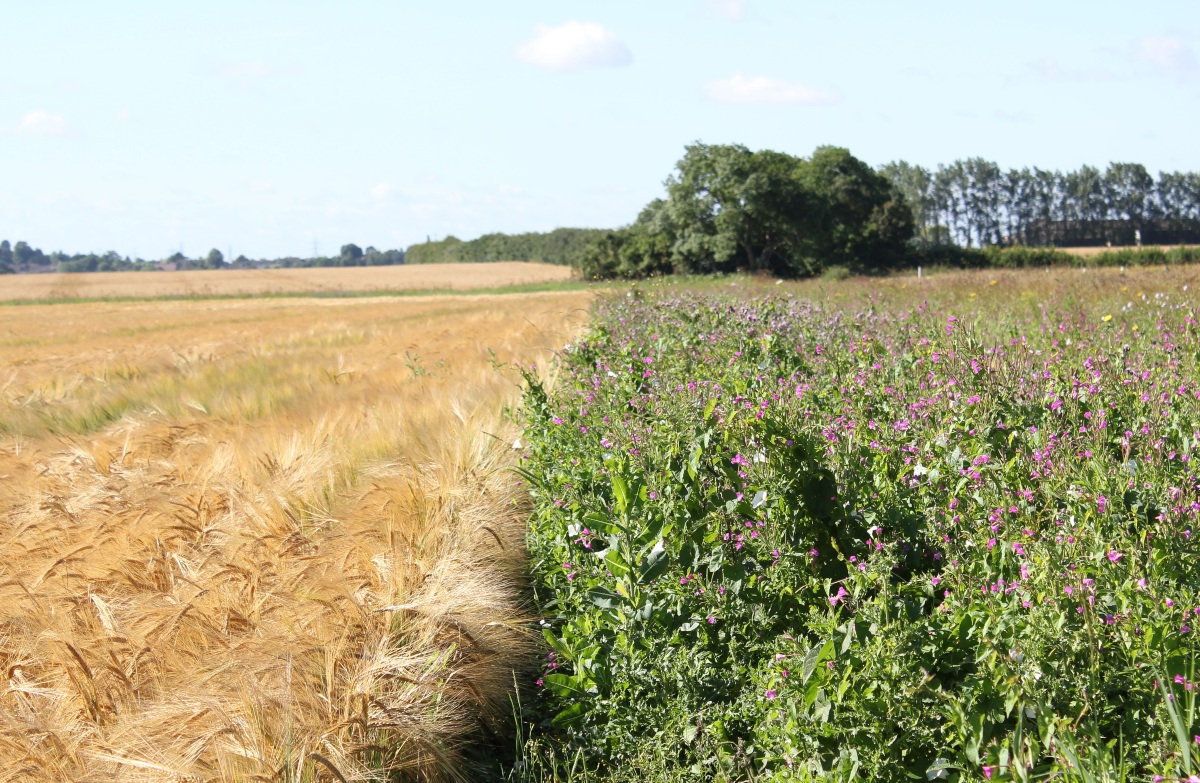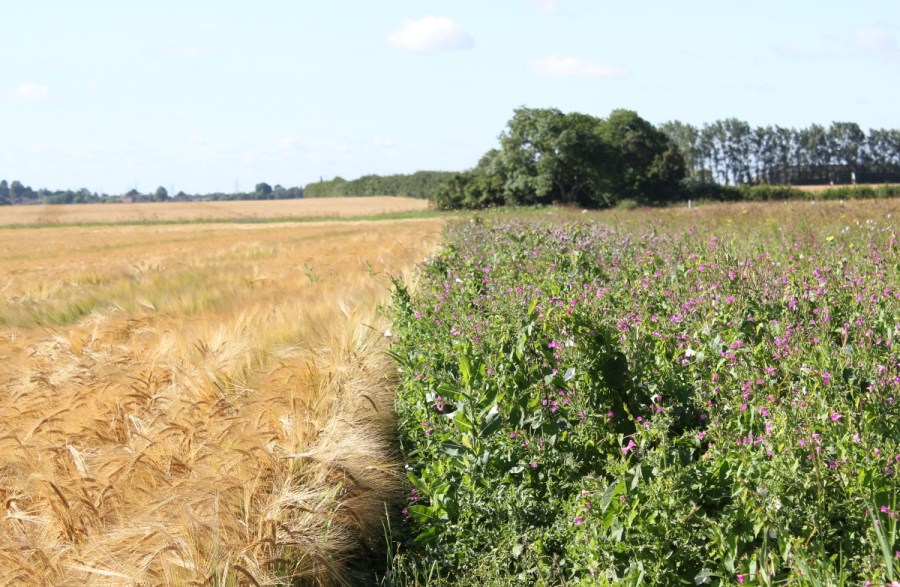
CPM explores a pioneering approach to improving cropping sustainability based on sharing ideas, testing approaches and close collaboration within and beyond the farming industry.
Our first priority in being more sustainable five or 10 years down the road is to still be in business then.
By Rob Jones
More sustainable farming is not something that can ever be achieved by any single approach, however enthusiastically advocated. Nor even through pressure from even the most vociferous or influential groups, organisations or bodies.
Demands from government, consumers and environmental groups will, naturally, play a part. As will the skills and experience of organisations like LEAF, universities like Harper Adams, research institutes like the UK Centre for Ecology & Hydrology (UKCEH), trade bodies like AIC and leading farm suppliers and advisers.
At the end of the day, though, real progress in achieving the best balance of economic, environmental and social sustainability can only come from the coal face – individual farmers working towards common goals in a whole host of different ways best suited to their own particular soils, conditions and situations.
To ensure this, they need to know what will and what won’t work – and under what circumstances. At the same time, they will have to engage in an open dialogue with all those other stakeholders in and beyond the food chain to understand each other’s needs, find the best solutions and implement them in ways that are actually practicable.
Otherwise, a huge amount of time, effort and money on all sides will be wasted in pushing approaches that are simply not implementable on the one hand, or in taking actions that can never achieve the required results on the other.
“This is the fundamental challenge we are addressing with our Green Horizons initiative,” explains Agrii sustainability manager, Amy Watkins. “Our recent national survey work with well over 200 growers shows there is a good understanding of what being sustainable means (Figure 1 – see PDF link at top).
“At the same time, though, it highlights the need for much better intelligence on how best to meet the various carbon, biodiversity and other priorities, while maintaining sufficient profitability (Figure 2 – see PDF link at top). Especially so since things that improve carbon capture can often have a negative effect on biodiversity and vice versa.
“Central to our efforts to do this is the network of like-minded growers we have established across the country, co-ordinated from one of our three Net Zero iFarms at Midloe Grange in Cambridgeshire. Together, they are working alongside our extensive variety, soil resilience, IPM and other trial work, and collaborative projects with a range of partners to share ideas, test approaches and showcase progress.”
Chosen from a larger number of farms than the Agrii team was expecting when applications were invited, the initial Green Horizons farmer network extends to 12 growers spread out across England, Scotland and Wales.
They span a broad range of soil types, rotations and farm types, sizes and systems – from specialist arable and vegetable to arable with dairy, and mixed arable, beef and sheep producers. All share the same pioneering desire to improve sustainability.
“To see the extent of different approaches, systems and trials underway on these farms has been a real eye-opener,” says Amy. “Some have been direct drilling for years while others are struggling to reduce tillage. Many have been successfully integrating livestock into their rotations while others are trying to boost organic matter levels without stock. Most have some experience with cover, catch or companion cropping although with varying degrees of success. And several are making their own composts.
“Maize features in some of their rotations, novel crops like chickpeas in others, and one has been growing continuous wheat for almost 10 years now. The network includes growers in a variety of Stewardship agreements, working collaboratively with others, involved in other projects like YEN Zero, and active in public engagement.
“Together they provide the perfect mix to keep our Green Horizons feet firmly on the ground; challenge us with new thinking; explore, compare and contrast different opportunities; and help communicate the most practical sustainability-improving intelligence within the farming industry and beyond.”
At Midloe Grange near St Neots, Green Horizon’s farm network co-ordinator, David Felce has been taking the lead in investigating ways of improving the sustainability of his own farming.
Through an innovative ‘Field of the Future’ project he is studying how best to employ genetics and green technologies to grow high-yielding wheat with fewer conventional inputs. In another, he is looking at different cultivation and winter management approaches for spring barley growing to improve soil resilience and organic matter.
Further studies are investigating the impact of cultivation methods and tyre pressures on compaction, diesel use and crop performance; improving OSR nutrient use efficiency with companion cropping and starter fertilisers; using trap crops and well-managed wildlife margins to control bruchid beetles and sitona weevils in beans without insecticides; and creating and maintaining the most valuable wildlife habitats with different mixtures and management.
“Whatever we do, we simply cannot completely change what we know works by taking leaps of faith into the unknown,” he insists. “After all, our first priority in being more sustainable five or 10 years down the road is to still be in business then!”
Parallel assessments from adjacent areas of 500 year-old pasture, 20 year-old wildlife margin and cropped field taken on the same day at Midloe Grange have, however, raised serious concerns over current soil health measurements (Table 1 – see PDF link at top).
Organic matter contents came out very much in line with what David expected, the ancient grassland having a much higher level than the margin, which was higher than the cropped field. As expected, soil moisture levels under the grassland and uncultivated margin were also better than in the arable field.
While the grassland came out with a much higher Visual Evaluation of Soil Structure (VESS) score, however, the wildlife margin scored worse than the cropped field despite having a clearly better crumb structure.
Both these areas also had much higher worm counts than the grassland, as well as higher carbon to nitrogen ratios. Overall the assessments showed little difference in Soil Health Score between the three areas.
“This just shows how much work still needs doing to develop some pretty basic soil health metrics if we are to make the progress we want – let alone be rewarded for it,” says David.
Improving sustainability with new pesticide impact metrics
Green Horizon studies are also highlighting ways of improving sustainability by minimising the unintended impact of crop protection product use, and demonstrating it to the wider world.
“We can’t reliably moderate our pesticide use – let alone demonstrate it – without a much better way of measuring progress than the overall weight of pesticides applied or treated hectares employed to date,” stresses Warwickshire farmer and Agrii agronomist, Mark Dewes, who is heading-up the work. “The existing metrics are virtually meaningless.
“Research for both my Nuffield scholarship and MSc in Sustainable Food Production at Aberystwyth suggests that measures like Pesticide Load Index (PLI) and Environmental Impact Quotient (EIQ) based on multiple and often poorly-understood factors in complex equations are both inappropriate and impractical. Instead, Treatment Frequency Index (TFI) appears to be a much better metric.”
Measuring the number of full rate equivalent applications of each product used per hectare, TFI is quick and easy to calculate from existing field records (Table 2 – see PDF link at top). This makes it simple to incorporate into recording for individual monitoring by crop and farm on the one hand, and use for regional and national reporting on the other.
While it doesn’t take complete account of the relative equivalence of different pesticides, being based on the full recommended label rate for each product derived from all the data under-pining its authorisation makes TFI a good proxy for pesticide-related harm.
“Adding weightings for specific products from the EU’s Harmonised Risk Indicator (HRI) system would help here,” reasons Mark. “This effectively means fewer ‘points’ for the more ‘environmentally benign’ products in the calculation.
“Although overall ratings will vary from season to season depending on rotation, crop condition and pest pressures, our work shows the rolling 3-5 year annual average HRI-adjusted TFI can provide a good indicator of how we are doing.
“Having it as a standard metric in crop performance monitoring would give us a really good measure of pesticide impact for our improvement efforts. It would allow us to set targets for moderating pesticide use as we plan ahead; develop our cultural controls to help us meet them; and track our progress in achieving them crop-by-crop and season-by-season.”
LEAF Innovation Centre network expanded
The UK-wide LEAF network of farms and research centres advancing the science and practical application of more sustainable, regenerative farming has been expanded this autumn with the addition of Agrii’s Throws Farm Technology Centre and Newcastle University Farms.
They join the 37 current demonstration farms and 12 innovation centres in the organisation’s concerted effort to spread the Integrated Farm Management (IFM) word as widely as possible throughout the farming industry and beyond.
Announcing the expansion, LEAF chief executive, Caroline Drummond MBE said: “We are delighted to welcome both these world class institutions to our network as we embark on the next 30 years of championing ways in which farming and the environment can face the future hand-in-hand.
“Never has the need for more sustainable, nature-based and agro-ecological approaches to farming been more urgent or widely-appreciated. Translating robust science into practical IFM action is essential if we are to address the joint challenges of climate change, biodiversity loss and quality ecosystem service provision. “
“Farming can only deliver here if all sides of our industry put their shoulders to the wheel and work together in a concerted way,” added Agrii head of integrated crop technologies, Dr Ruth Mann.
“Pushing forward the best science and technology to build, strong resilient and profitable businesses underpins our Green Horizons initiative to drive UK farming sustainability. We see working closely with LEAF amongst other industry leaders as central to achieving the real and lasting change essential to all our futures.
“Active partnerships like these are the only way we can drive change in practical ways that meet the needs of all those involved,” she insists.
Agri-Intelligence Update
The latest in our long-running series with the country’s most extensive agronomy R&D network gives CPM readers exclusive insights into exciting areas of Agrii’s Green Horizons initiative to improve the sustainability of UK food and farming in practical ways with the best scientific intelligence.
Each article explores an important facet of one of the initiative’s key priority actions being developed in detail in separate Insight Reports the final one of which – Improving Stakeholder Engagement – will available from the end of this year at www.agrii.co.uk/greenhorizons.
The report includes the latest information on Agrii’s work to strengthen links with manufacturers, businesses and organisations involved in all parts of the food chain, as well as improving public engagement.




